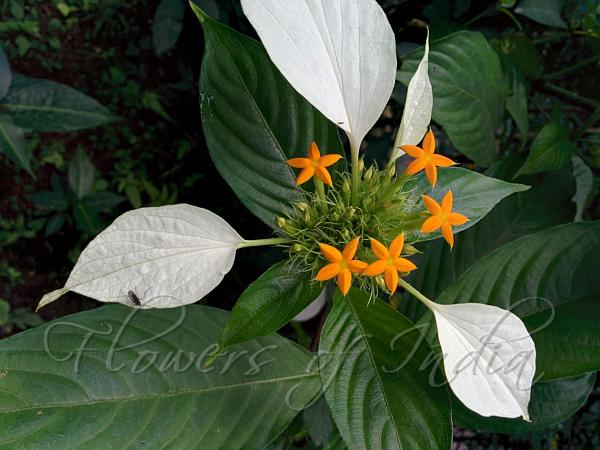|
| East Himalayan Mussaenda |
|

|

|
|
|
|
Photo: |
Botanical name: Mussaenda roxburghii Family: Rubiaceae (Coffee family)
East Himalayan Mussaenda is a shrub up to 3 m tall, with
stem usually hairy above. Leaves are elliptic-oblong-lanceshaped, long-pointed,
bristly hairy on midrib beneath, short-stalked. Stipules are triangular-lanceshaped.
Flowers are borne in
dense clusters about 5 cm across, at branch ends. Sepals are 5, threadlike, hairy. One sepal is often enlarged into a white
inverted-lanceshaped, stalked "leaf". Flower-tube is narrow, 3-3.5 cm
long, silky. Petals are bright orange inside, white outside, with
threadlike tips. Berries are oblong-ellipsoid, smooth, crowned with the
sepals. East Himalayan Mussaenda is found in East Himalayas, from C. Nepal
to Bhutan, Assam and Burma, at altitudes up to 1600 m. In the Karbi community
of Assam, the leaves of this plant, locally called Voso Piban, are used in
cooking chicken with powdered rice. Flowering: May-August.
| Identification credit: Tabish | Photographed in Shillong, Meghalaya & Arunachal Pradesh. |
• Is this flower misidentified? If yes,